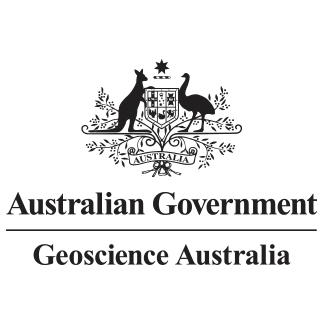Full description
Geoscience Australia (GA) generated a series of gravity and magnetic grids and enhancements covering Northern Australia. Several derivative gravity datasets have been generated 1) for the North-West Shield Western Australia region (approximately between latitudes 7‒26⁰ S and longitudes 110‒130⁰ E), 2) for the Northern Territory (approximately between latitudes 7‒26⁰ S and longitudes 125.5‒141⁰ E) and for Queensland (approximately between latitudes 7‒30⁰ S and longitudes 135‒160⁰ E). The magnetic dataset has been generated only for the North-West Shield Western Australia region (approximately between latitudes 7‒26⁰ S and longitudes 110‒130⁰ E). The magnetic and gravity data were downloaded from the Geophysical Archive Data Delivery System (GADDS), website (http://www.geoscience.gov.au/cgi-bin/mapserv?map=/nas/web/ops/prod/apps/mapserver/gadds/wms_map/gadds.map&mode=browse). Satellite Free-air (FA) gravity v27.1 (released March 11, 2019) and Satellite Topography v19.1 (released January 14, 2019) data were sourced from Sandwell et al. (2014) and downloaded from the Scripps Institution of Oceanography (SIO), National Oceanic and Atmospheric Administration (NOAA), U.S. Navy and National Geospatial-Intelligence Agency (NGA) (SIO Satellite Geodesy, website, http://topex.ucsd.edu/WWW_html/mar_grav.html). The Satellite Bouguer gravity grid with onshore correction density of 2.67 gcm-3 and offshore correction density of 2.20 gcm-3 was derived from the Free-air gravity v27.1 and Topography data V19.1. This Bouguer gravity grid was used for filling areas of data gaps in the offshore region.
Data evaluation and processing of gravity and magnetic data available in the area of interest resulted in the production of stitched onshore-offshore Bouguer gravity grid derived from offshore satellite Bouguer gravity grid and GA’s onshore ground and airborne gravity survey data and a stitched Total Magnetic Intensity (TMI) grid derived from airborne and shipborne surveys (Tables 1 and 5). A Reduction to the Pole (RTP) grid was derived from the stitched TMI grid. The TMI, RTP, FA and terrain corrected Bouguer gravity anomalies are standard datasets for geological analysis. The free-air gravity anomaly provides the raw and basic gravity information. Images of free-air gravity are useful for first-pass interpretation and the data is used for gravity modelling. Magnetic anomalies provide information on numerous magnetic sources, including deep sources as arising from the structure and composition of magnetic basement and shallow sources such as intra-sedimentary magnetic units (e.g. volcanics, intrusions, and magnetic sedimentary layers). A standard TMI image will contain information from all these sources. Geosoft Oasis montaj software was used throughout the data processing and enhancement procedure and the montaj GridKnit module was used to generate the stitched gravity and magnetic grids.
Enhancement techniques have been applied to the final processed Bouguer gravity and RTP magnetic grids to highlight subtle features from various sources and to separate anomalies from different source depths. These enhancement techniques are described in the next section.
Enhancement processing techniques and results
A summary of image processing techniques used to achieve various outcomes is described in Table 1.
Data type Filter applied Enhancement/outcome
Gravity/Magnetic First vertical derivative (1VD) Near surface features (e.g. intrabasinal)
Gravity/Magnetic Upward continuation Noise reduction in data
Gravity/Magnetic Low pass filter, or large distance upward continuation Enhancement of deep features (e.g. basement)
Gravity/Magnetic High pass filter Enhancement of shallow features (e.g. surface anomalies)
Gravity/Magnetic Tilt filter and 1VD Enhancement of structure (e.g. in basement)
Gravity/Magnetic ZS-Edgezone and ZS-Edge filters Enhancement of edges
Gravity/Magnetic horizontal modulus / horizontal gradient Enhancement of boundaries
Magnetic RTP (reduction to the pole), Compound Anomaly, and Analytic Signal filter Accurate location of sources
Lineage
Maintenance and Update Frequency: asNeededNotes
PurposeDigital grids for public use
Created: 14 08 2019
Issued: 02 09 2019
Data time period: 2019-08-30
text: westlimit=110; southlimit=-30; eastlimit=160; northlimit=-7; projection=GDA94 (EPSG:4283)
User Contributed Tags
Login to tag this record with meaningful keywords to make it easier to discover
Download the Gravity data package
uri :
https://d28rz98at9flks.cloudfront.net/130720/130720_GravityData.zip![]()
Download the Magnetic data package
uri :
https://d28rz98at9flks.cloudfront.net/130720/130720_MagneticData.zip![]()
Download the Metadata document
uri :
https://d28rz98at9flks.cloudfront.net/130720/130720_Metadata.docx![]()
- DOI : 10.26186/5D6C66A1A075E

- Local : pid.geoscience.gov.au/dataset/ga/130720
- global : 0e40695c-95b9-4275-a0da-5994cb5bbc5a


